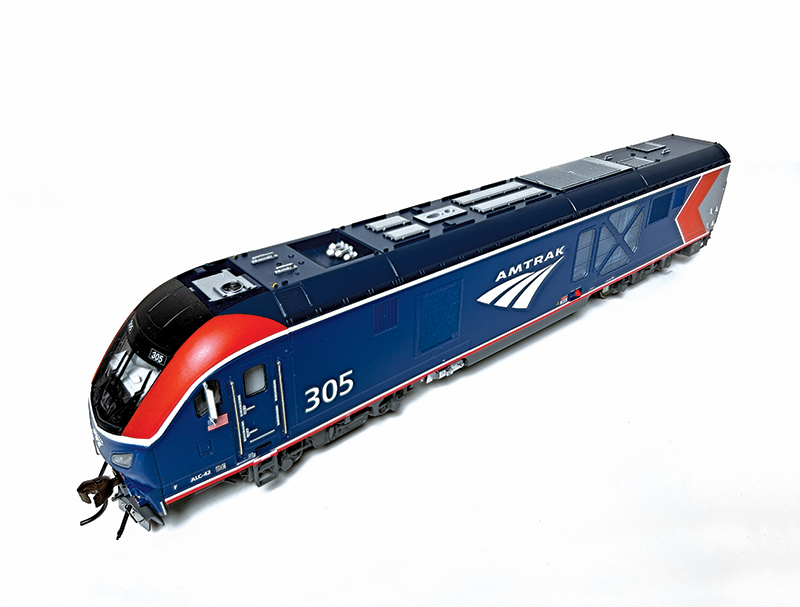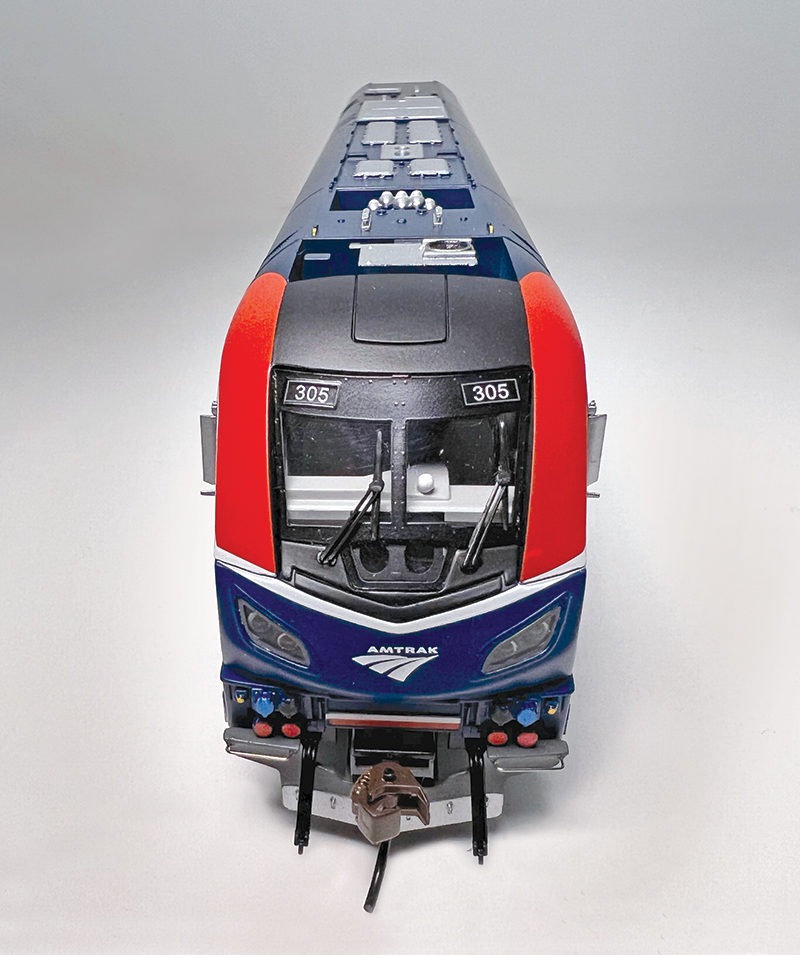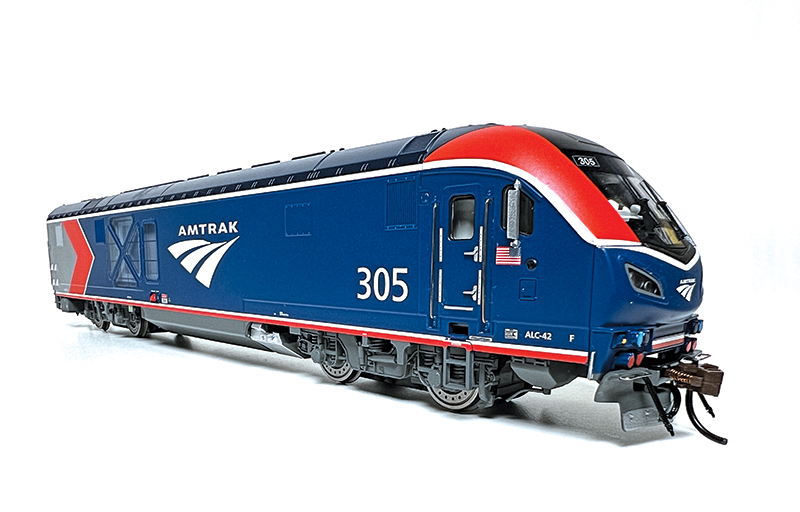Review by Harry K. Wong/photos by the author
Concurrent with the delivery of its prototype counterpart, Bachmann Trains has just released a premium-level replica of the Siemens ALC-42 Charger locomotive in HO scale. Designed and built by Siemens Mobility of Sacramento, Calif., the ALC-42 Charger is a 4,200hp, four-axle AC traction diesel-electric passenger locomotive. The ALC-42s are destined to replace Amtrak’s aging fleet of General Electric P42s which entered service in 1996. Powered by a 16-cylinder Cummins QSK95 prime mover, the ALC-42 meets or exceeds the latest safety and Tier 4 emissions standards currently in effect. All Chargers are based on Siemens’ Vectron series of diesel and electric locomotives sold in Europe. The Charger family made its American debut in 2014 with the SCB-40 Charger for Florida’s Brightline, followed by SC-44 units for Amtrak’s regional state-sponsored services and for numerous local commuter agencies. Beginning in late 2021, a SC-42 variant has also entered production for VIA Rail Canada.
While the car body of each Charger is nearly identical beneath the paint, the Brightline SCB-40, VIA Rail SC-42, and Amtrak ALC-42 each have a uniquely styled nose cone and lighting arrangement above the front pilot which enable each to have a somewhat distinct appearance from each other. VIA Rail has ordered 32 SC-42s, while Amtrak has committed to 75 ALC-42 locomotives being delivered over the next four years. Derived from the SC-44, ALC-42s feature larger fuel and DEF (Diesel Emissions Fluid) tanks and other changes to optimize this platform for long-distance operations.

The Model
Since 2020, Bachmann has delivered HO scale versions of the older SC-44 Charger in two production runs covering a large number of paint schemes. This inaugural release of the Bachmann ALC-42 features new tooling to cover the external changes and comes in three different road numbers and two additional liveries. As with the prototype, a unique paint scheme has been applied to Amtrak ALC-42 301. 301 wears a reprise of Amtrak’s black “Day One” livery, applied only previously to EMD E8A 4316 for media photos taken on Amtrak’s founding day of May 1, 1971.
Our review sample represents Amtrak 305, one of the ALC-42s now being delivered in an all-new rendition of Amtrak’s Phase VI livery. As I type this, the real Amtrak 305 is on its delivery trip east with sister 304 from the Siemens plant in California to Amtrak’s shop in Wilmington, Del., where they will be tested and certified before entering revenue service. It’s not every day that modelers get the chance to purchase an HO-sized replica before the prototype has been delivered, so this is a wonderful achievement by Bachmann Trains, made possible only with the full cooperation of both Siemens and Amtrak. Bravo!
Out of the box, Bachmann’s rendition of the ALC-42 presents itself well with accurate body dimensions and proportions, with lettering and paint crisply applied. The nose cone unique to the ALC-42 corresponds precisely to photographs and videos of the prototype.

Separately applied details include windshield wipers, cab mirrors, wire handrails and air and m.u. hoses. A cab interior is visible behind the windscreen, with seats, control desk/dashboard and rear bulkhead all molded in a light gray. Rooftop details include a five-chime air horn cluster with shields, radio antennas for Positive Train Control and crew communications, a flush exhaust port, multiple equipment access panels, and two large fan assemblies with simulated fan blades visible.
However, the most notable detail on the Charger model is also the most distinctive feature seen on the prototype — the large transparent X-pattern grille on the sides of the car body located just ahead of the rear truck. This “signature” feature is even more obvious when you observe the prototype at night, as the X-pattern grille is backlit from within the locomotive thanks to corridor lighting within its interior. Bachmann correctly and gently captures this effect with a combination of subtle LED lighting and a panel of simulated interior equipment inset within the frame on both sides of the unit. The effect is convincingly realistic and not at all toylike. Nevertheless, if this just seems too showy to you, the interior lighting can be doused under DCC with Function F9 while in “light” function mode…





